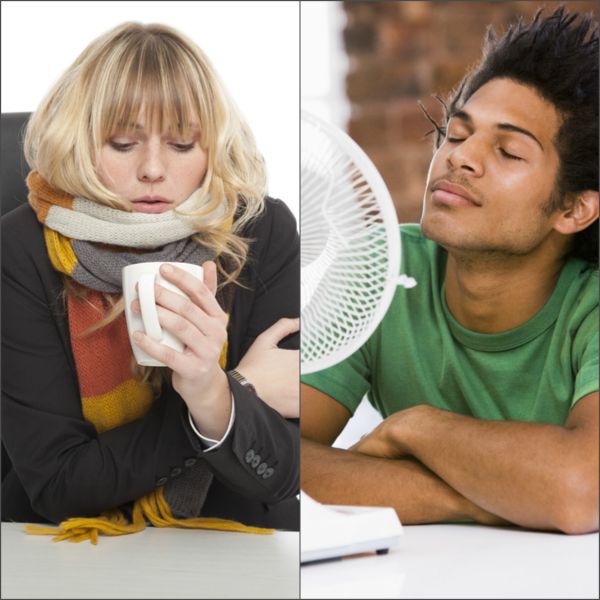With every change of season, you can expect new complaints about the thermostat setting. This isn’t (necessarily) because employees are grouchy. Studies suggest that previously recommended temperature settings are outdated and biased. International reports vary on the optimal setting for thermal comfort in office buildings. The United States Department of Labor Occupational and Safety Administration recommends anywhere from 68°F – 76°F. Many offices implement seasonal temperature standards established by the American Society of Heating, Refrigerating and Air-Conditioning Engineers (ASHRAE) in the 1960s; though temperatures vary based on humidity and other factors, ASHRAE recommends thermal comfort temperatures as low as 67°F. Such low temperatures are problematic for two reasons. Primarily, men set the standards for the workplace in the 1960s. Men’s thermal comfort temperature is lower differs from that of women. Studies published by the US National Library of Medicine reveal that men prefer an environment that is roughly 72°F whereas women are most comfortable in an environment of about 77°F. (Temperature preferences are influenced by metabolism rates and fat to muscle ratios.) The American workplace is more diverse than it was in the 60s, but thermal comfort guidelines have yet to catch up. Changes in workplace norms also affect our comfort levels. Business attire isn’t what it was in the 1960s. Most noticeably, men and women wear fewer suits. Clothing materials have also changed. In place of traditional wool or gabardine, clothiers now manufacture a host of breathable business wear fabrics. When indoors, modern employees may feel cooler than their 1960s counterparts because of clothing choices. Changing indoor temperatures could result in cost savings for a business. Decreasing the strain on central cooling systems results in lower utility costs. E Source estimates that HVAC systems require 42 percent of electricity and 86 percent of...

